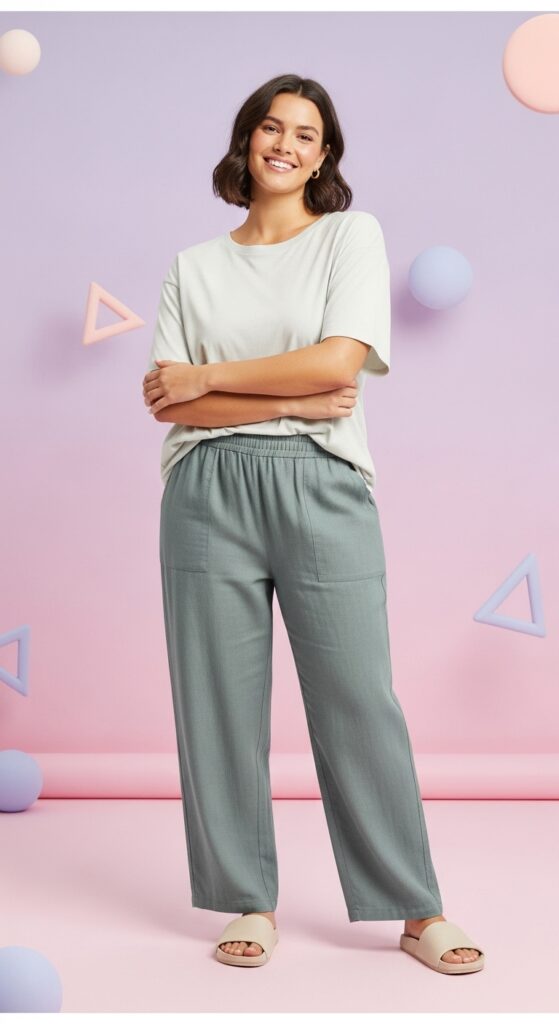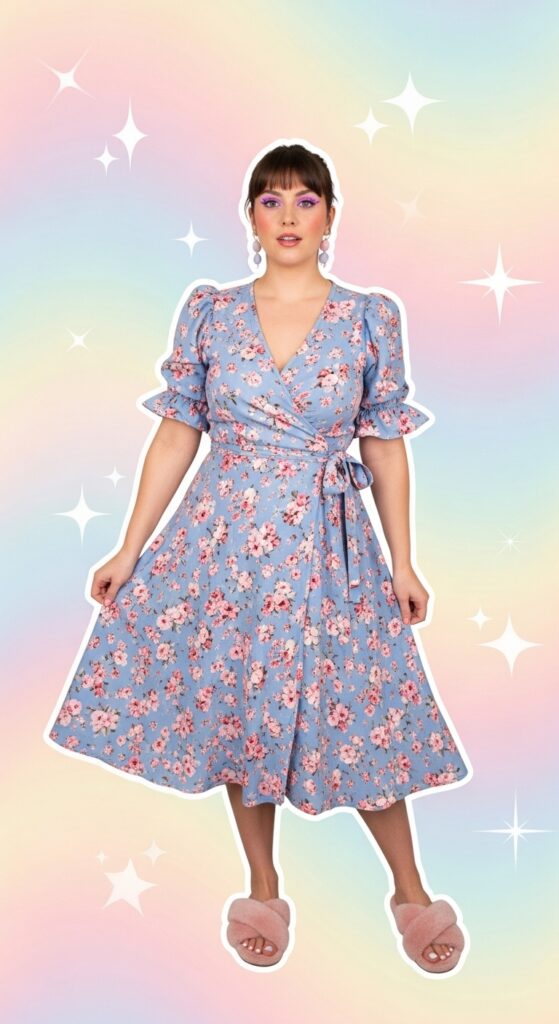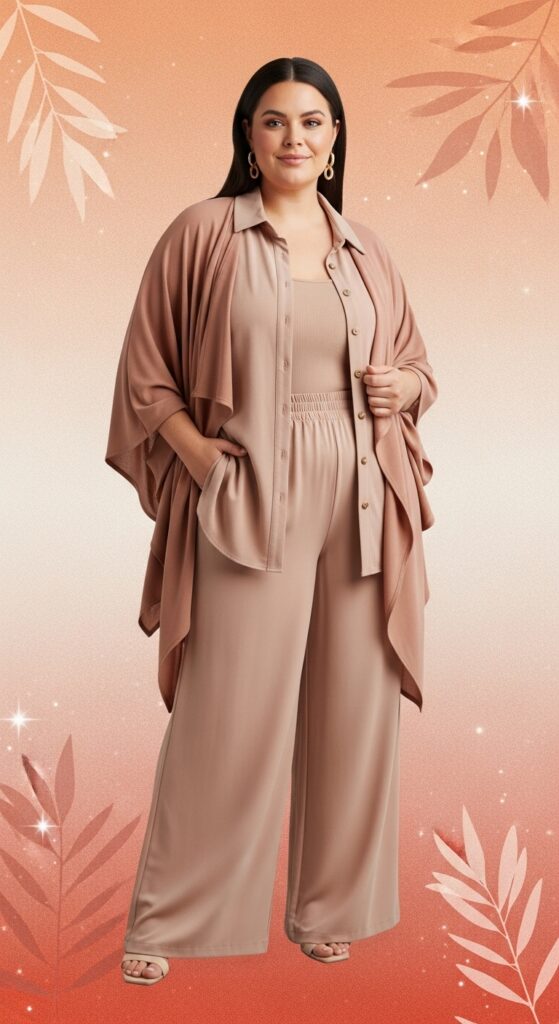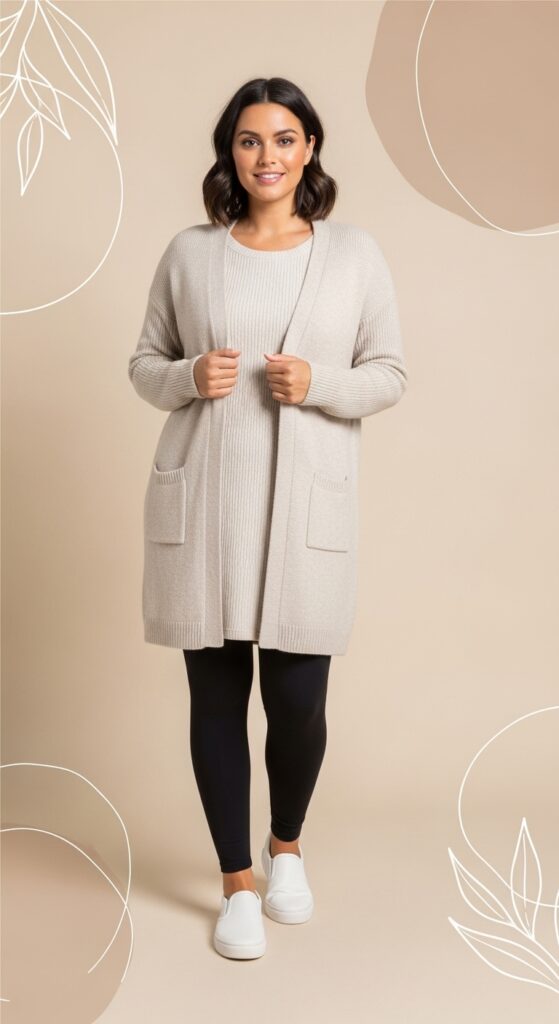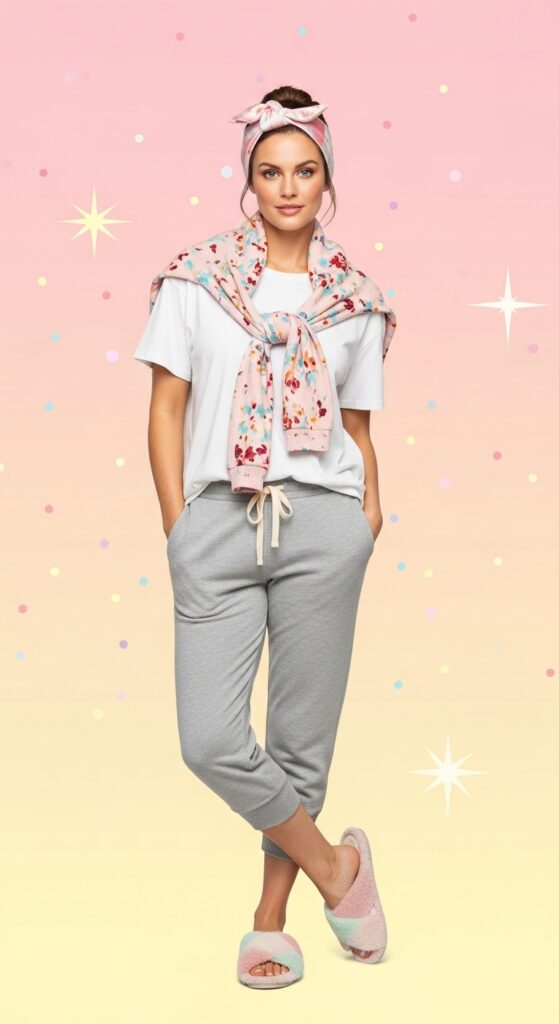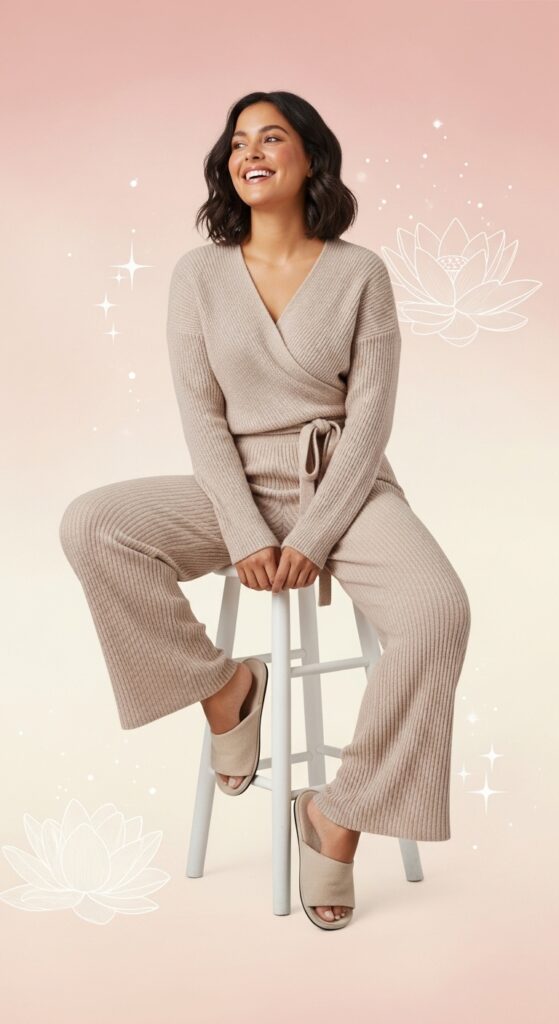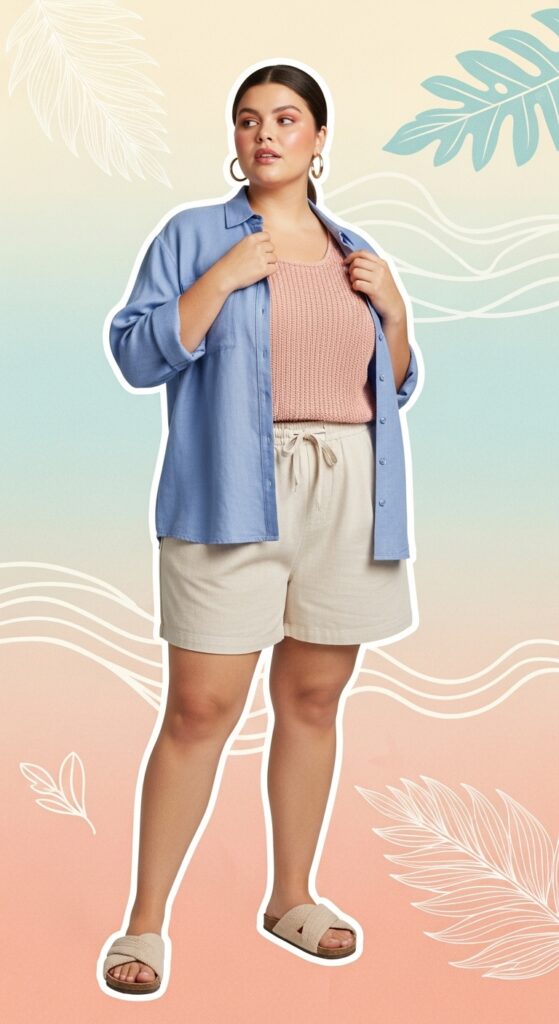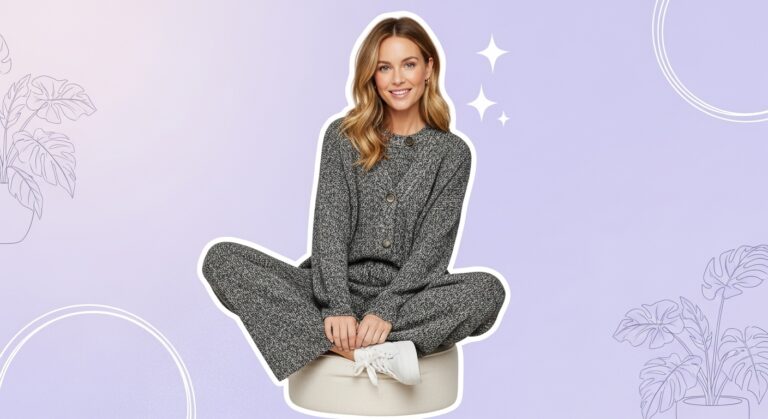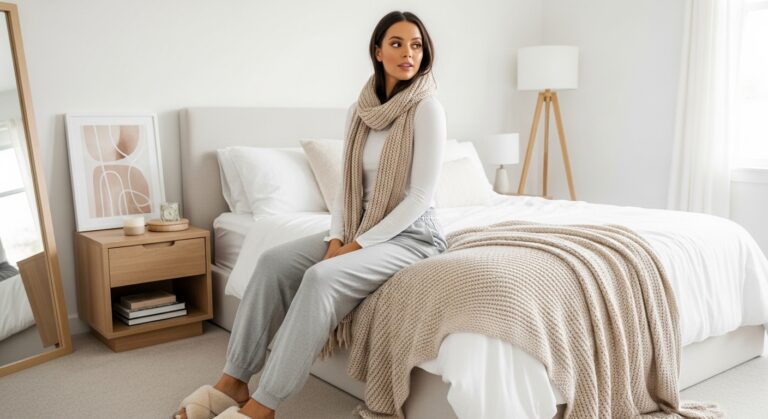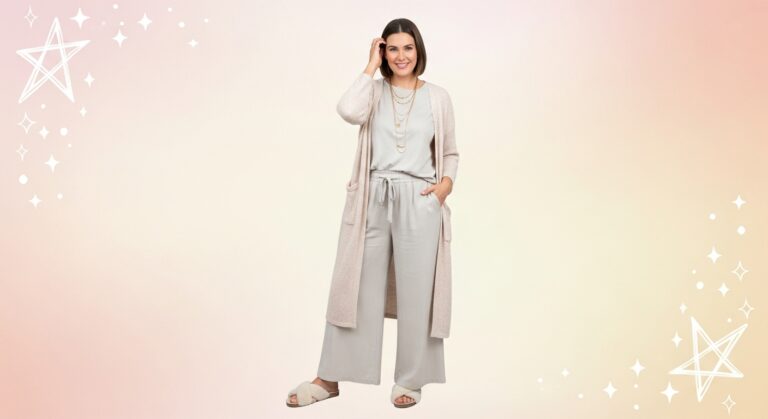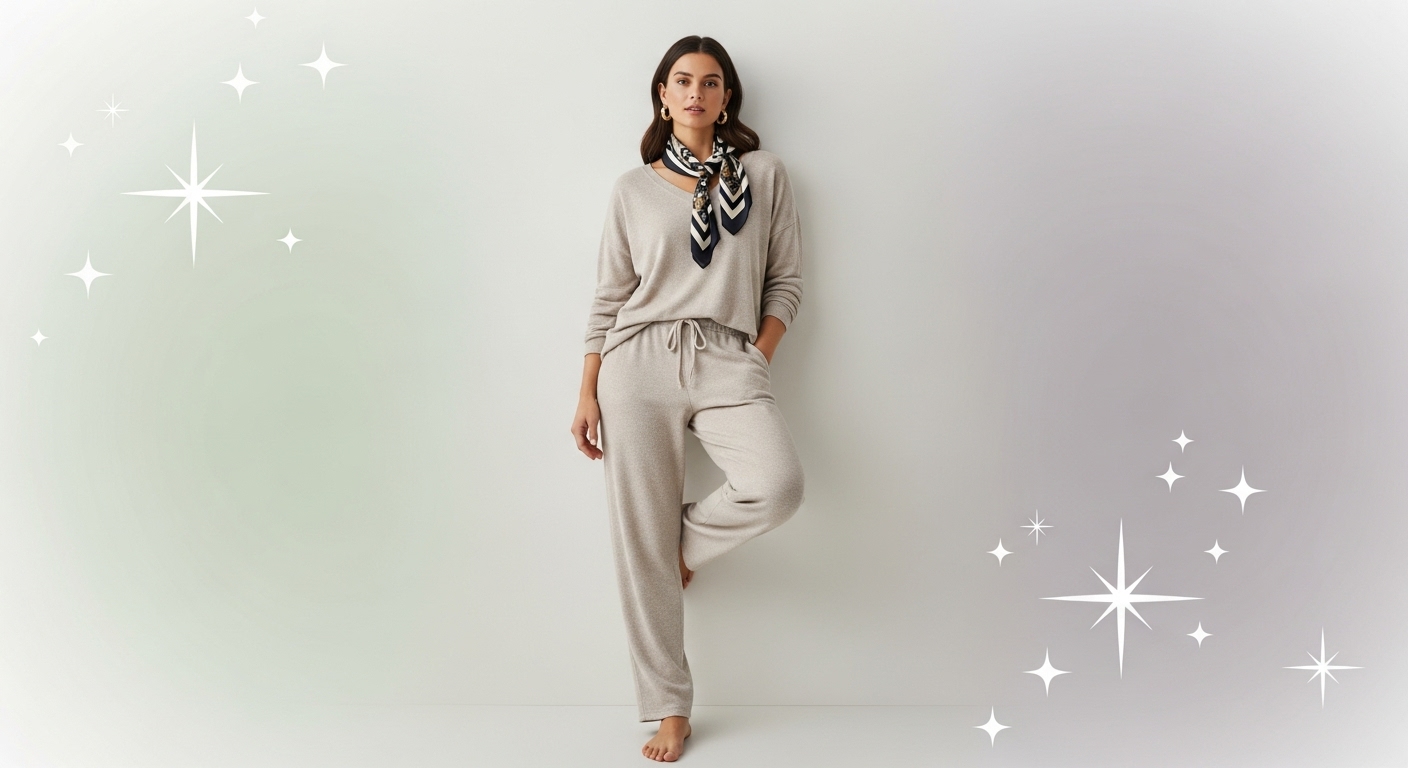
When the world outside feels uncertain, home becomes our safe haven. Yet, so often, the clothes we wear inside our four walls are an afterthought. For a long time, I reached for anything soft and easy, convinced it didn’t matter if my outfit only saw the light of my living room. But I soon realized that how I dressed at home influenced my mood, motivation, and sense of self-worth.
Wearing thoughtful, comfortable outfits each day brought a renewed sense of routine and even joy to the quietest days. Clothes are a language, even when we’re our only audience. Your at-home style is more than pajamas or loungewear. It’s an expression of who you are—your comforts, your creativity, and your confidence.
If you’re unsure what your at-home style looks or feels like, you’re not alone. Many women find themselves caught between the temptation to “dress down” and the desire to feel put together. Discovering your unique at-home style is a gift to yourself, and it starts with a bit of honest observation.
Observe Your Everyday Habits and Home Life
The first step in finding your at-home style is understanding your real, daily routines. Take a few days to pay attention to how you spend your time at home. Are you working remotely? Chasing after kids? Cooking, crafting, relaxing with a book, or squeezing in home workouts? Every woman’s home life is different, and your wardrobe should serve your true needs.
Write down your most frequent at-home activities for one week. For example, maybe you:
- Spend mornings at your kitchen table on video calls
- Take your dog for a quick walk before lunch
- Sneak in a yoga class between chores
- Read on the balcony in the evenings
Notice which outfits made you feel your best and which ones left you tugging, overheated, or uncomfortable. Sometimes the issue isn’t the clothing itself, but how it fits into your routine. If your leggings are great for stretching but too thin for answering the door, make a note. Building your at-home style starts with meeting the practical needs of your real day.
Define Your Comfort Zone—And Stretch It Gently
Comfort is non-negotiable for most women at home, but comfort doesn’t have to mean settling for the oldest or most shapeless thing you own. The right fabrics, fits, and details can bring ease and style into perfect balance. Start by evaluating the clothes you instinctively reach for on slow mornings or tired evenings. What makes them work? Is it the softness, the fit, or the easy movement?
If your comfort zone has you living in hoodies and sweatpants, try introducing a small change: swap a baggy sweatshirt for a fitted knit top, or pull on joggers in a color that lifts your mood. If you already lean toward cute matching sets, experiment with new textures or relaxed silhouettes.
Key points to keep in mind:
- Look for breathable materials like cotton, bamboo, or modal
- Favor relaxed, but flattering, cuts that move with you
- Avoid anything that digs, pinches, or demands constant adjustment
Comfort is personal. The trick is to find that sweet spot where you feel at ease but still like yourself in the mirror.
Notice the Colors and Patterns That Lift Your Spirits
The color and pattern of your at-home clothes might seem trivial, but they hold real power. For months, I wore only neutrals at home, believing it was practical. After a while, though, I craved more energy and warmth. Introducing soft blues, blush pinks, or even playful prints transformed how I felt about dressing, even if I was the only one to see it.
Think about what colors you love in nature, art, or even your favorite Instagram feeds. Try on different shades at home and see how they make you feel. Sometimes a bright pair of socks or a floral lounge set is all it takes to bring a little sunshine to a routine day.
If you’re not sure where to start:
- Pull out three to five pieces you already own and love—what colors and prints do they share?
- Try wearing a pop of color in a tee, headband, or robe
- If you’re drawn to patterns, introduce stripes, dots, or florals in small doses
Allow your at-home wardrobe to reflect the mood you want for yourself, not just what hides stains or feels invisible.
Experiment With Silhouettes and Layers
At home, you have the freedom to experiment without outside pressure. Maybe you adore wide-leg pants, floaty kimonos, or belted shirt dresses—but never felt brave enough to wear them out. Your own space is the perfect place to try out new silhouettes and discover what makes you feel authentic and beautiful.
Start by mixing one new shape or layering piece into your usual look. If you usually wear leggings and a tee, try adding a duster cardigan or oversized button-up. If you’re a fan of sets, look for unexpected details—a wrap top, a cropped sweater, or a tunic you can belt or leave loose. Changing proportions can make familiar outfits feel brand new.
Tips for experimenting with silhouettes:
- Layer a lightweight robe or kimono over your standard base layer
- Tuck a loose tee into high-rise lounge shorts or soft pants for instant polish
- Play with cropped, oversized, or fitted shapes to see what feels “most you”
Home is the ideal place to test and refine your favorites before committing to new pieces or trends.
Build a Small, Thoughtful At-Home Wardrobe
Once you know what works, curate a small, focused at-home wardrobe. This isn’t about having dozens of options, but rather a handful of outfits that serve you well every day. Start by separating your most-loved loungewear and home basics from everything else. Fold or hang them where you’ll see them first each morning.
For most women, a practical at-home wardrobe might include:
- 3–5 comfortable tops in colors you love
- 2–3 pairs of soft, presentable bottoms (leggings, joggers, or knit pants)
- 1–2 easy layering pieces (a cardigan, duster, or hoodie)
- A favorite set of pajamas or nightwear
- A “house dress” or jumpsuit for when you want to feel a bit more dressed up
- Warm socks or slippers for cold floors
Keep only what feels good, looks fresh, and makes your daily life easier. Donate or repurpose anything that’s worn out or simply doesn’t feel like you.
Add Accessories for Personality (and Practicality)
Accessories aren’t just for going out. Even at home, a scarf, statement earrings, or colorful headband can brighten your mood and make you feel special. On days when energy is low or you need a lift, reaching for a playful scrunchie or spritzing your favorite fragrance can be the difference between “just another Tuesday” and “today feels good.”
Think about practical accessories, too:
- Soft slippers or slides to protect your feet and signal “relaxation mode”
- A light robe for layering on chilly mornings or post-shower
- Blue-light glasses or a favorite bracelet for your work-from-home setup
These tiny touches let you personalize your look and support your routine—no extra effort required.
Learn to Dress for Your Own Eyes (Not Just for Others)
One of the most freeing lessons in finding your at-home style is dressing for your own satisfaction, not anyone else’s expectations. This is your chance to honor how you want to feel, whether that’s cozy and low-key or polished and energized. Take selfies, stand in front of the mirror, and ask: “Do I feel at home in this? Would I choose this again?”
If you find yourself slipping back into “who cares?” mode, remind yourself that your comfort, pleasure, and self-respect matter. You’re worth the five minutes it takes to put on a fresh top, smooth your hair, or choose a necklace you love—even if the only one who sees it is you.
Over time, you’ll notice how your energy, confidence, and even productivity shift with what you choose to wear. Dressing with intention, just for yourself, is a quiet act of self-care.
Try, Reflect, and Adjust
Finding your at-home style isn’t a one-time decision—it’s a gentle, ongoing process. Each season, as your routines change or your needs evolve, revisit your choices. Maybe you need more layers for chilly weather, or lighter fabrics as summer arrives. Listen to your instincts and don’t be afraid to swap out, donate, or repurpose pieces that no longer serve you.
Questions to ask as you reflect:
- What outfits am I reaching for again and again?
- Which pieces feel out of place or never get worn?
- Are there gaps—like needing more work-from-home options, or cozy pieces for relaxation?
Let your at-home wardrobe grow and change with you, just like every other part of your life.

